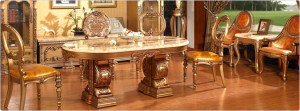Marble wonder Taj Mahal – Edifice Symbolizing Love
Posted on Aug 14, 2013
Taj Mahal was built by Mughal emperor Shah Jahan in grief, when his beloved wife Mumtaz Mahal died during birth of 14th child. As the name signifies, it is indeed “crown of palaces” and is built from white marble. It is considered as masterpiece of Muslim art in India and attracts large number of tourists from around the globe. In the year 1983, Taj Mahal became a World Heritage Site of UNESCO. Standing high as its popularity, it is an integrated complex of structures. Shah Jahan employed thousand of artisans and craftsmen for construction, beginning somewhere around 1632 it was completed around 1653. The main mausoleum’s construction was completed in 1648 and the surrounding buildings and garden took five more years.
Shah Jahan envisioned and included following in the site plan – Moonlight Garden to north of river Yamuna, Terrace area: Tomb, Mosque and Jawab, Charbagh, Gateway, attendant accommodations and other tombs and Taj Ganji (market). The Taj Mahal was constructed from twenty eight types of precious and semi-precious stones obtaining them from all over India and Asia and were inlaid to white marble, white marble was brought from Makrana, Rajasthan; Jasper from Punjab; Jade and crystal from China; turquoise from Tibet, Lapiz lazuli from Afghanistan; Sapphire from Sri Lanka and Camelian from Arabia.
Architecture Tomb: Is the focal point of entire complex of Taj Mahal and is made of large white marble structure standing on square plinth and has symmetrical building with arch-shaped doorway and a dome on top and a finial. The original graves of Shah Jahan and Mumtaz lie at lower level and the ones at main chamber houses are false sarcophagi. The tomb and chattris which has finial on top represent age-old Persian
and Indian decorative art.
Exterior Decor: Represents finest Mughal architecture and the decorations on the surface are proportionally refined. The decorative elements were made by application of paint, stucco, stone inlays or carvings. The striking beauty is inscription of passages from Holy Quran throughout the complex. The polished and leveled marble boosts the intricate carvings and dado frames and archway sprandels are decorated with pietra dua inlays.
Interior Decor: The inside chamber is octagon shaped and according to the design entry is possible from each face, though only one facing the garden is used. The interior chamber is exquisite lapidary of precious and semiprecious gemstones. According to Muslim tradition, graves are not decorated in elaborate manner, hence the bodies are put in plain crypt under the inner chamber and faces are turned right towards Mecca.
Charbagh: Stretches around 300 meter and inspired from Persian gardens. There is a raised marble water tank at the center of garden and a pool which reflects the image of the Taj Mahal. Rest of the garden area is laid out with avenues, trees and fountains.
Outlying Buildings: The Taj Mahal has red sandstone walls on the three sides but the river facing side is kept open. Rest of the outlying mausoleums is for Shah Jahan’s other wives and the domed chattris might have been watch towers.























